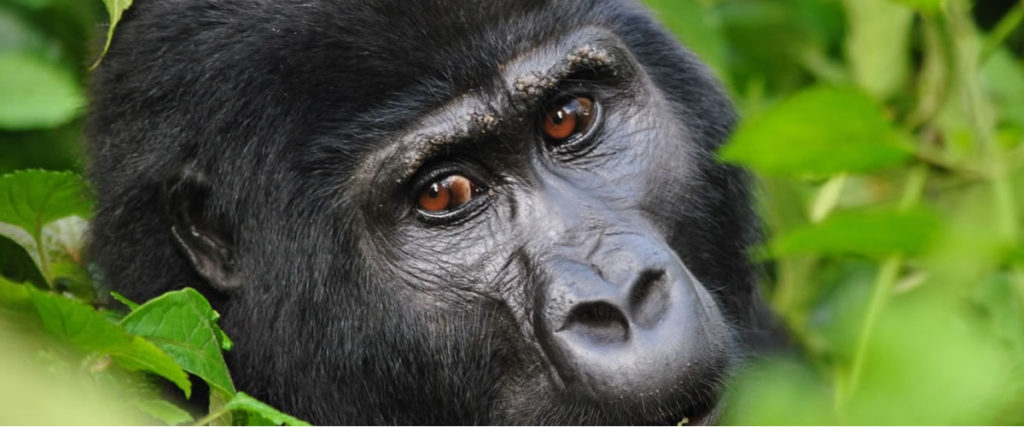19 Facts about Mountain Gorillas | Why are Mountain gorillas endangered?
Facts about Mountain Gorillas and why are Mountain gorillas endangered?. Mountain Gorillas are some of the most exciting primates to spend your time with. The major exciting facts about Mountain Gorillas are that they are very strong, very good eaters, very similar to humans and have pretty much the smallest sexual organs( why mountain gorillas are unique). Whether you have already booked your permit or planning to book one, maybe you are just challenging yourself to have more knowledge about this exciting primate. You can probably find all the important information in this blog about nineteen facts about the mountain gorillas.
To save you the suffering of navigating several pages of textbooks and hours of internet surfing, we have narrowed all the information about a mountain gorilla in just nineteen paragraphs. You find it exciting. We hope!!

- The mountain gorillas are the largest and the rarest of all the three species. A male mountain gorilla can reach an average of 6 feet tall when standing upright and weigh 180 to 230 kilograms. Females are smaller with 4 ft. 5 ft. average height while standing and weigh between 70 and 120 kilograms.
- There are three species of gorillas and the mountain gorilla is one of the subspecies of Gorillas that exist today; the western lowland gorilla which occurs in West Africa, the Cross River gorilla that can be found at the Nigerian/Cameroonian border and Grauer’s gorilla or the eastern lowland gorilla in the eastern Democratic Republic of Congo.
- Males develop a streak of silver hair when they are mature and thus adopt the name silverback. The silvery appearance is caused by short, grey hairs which cover the back and extends to hips and upper thighs. The silver back develops when they are about 15 years of age in the wild.
- Man is the Gorilla’s closest relative. The nuclear DNA differs by 1.6% between humans and gorillas and there’s 99% likeness between man and a mountain gorilla. Their hands and feet resemble our own so much and interestingly the distance between their big toe and the other toes is very short. Their teeth too very much resemble ours, except for the very long, the likeness is enormous.
- A mountain gorilla is an endangered species and fewer of them are left today and only inhabit the tropical rainforest ecosystems of Virunga volcanoes of Rwanda, Zaire and Uganda with Uganda having the largest last remaining population of the mountain gorilla.
- The population sizes and densities of mountain gorillas are difficult to ascertain for it is not possible to count non-habituated gorillas directly. What researchers and wildlife authorities do to obtain their numbers and population densities is that they make estimate based on the number of nest.As of 2019 the gorillas in Uganda are 459 mountain gorillas.
- They create transects within the forest over a given distance and a walk along these transects and record all gorilla nests visible until the entire forest is covered. That’s how the population sizes and densities of non-habituated mountain gorillas are arrived at.
- The mountain gorillas have shorter arms than the other populations and very long, silky hair, mainly on the arms. Though the hair on their backs is shorter than on most other body parts.
- Mountain Gorillas are actually shy animals; they live in social groups of 2-35 individuals. These are called families however a collection of mountain gorillas is called a band. The silverback who is the dominant male is the leader of the group and commands all respect from all other group members, as a leader he’s responsible for the safety and security of the family.
- Mountain Gorillas are herbivores and so eat a lot of vegetation they feed on roots, leaves, stems and bamboo. But the gorilla actually loves foraging on bamboo. They also eat soil occasionally. It is believed that the soil contains minerals that maybe missing in their normal diet, or the minerals neutralize poisonous substances in their food.
- Gorillas live primarily on the ground. They spend only 5–20% of the day in trees and when they climb, they mainly do eat fruits and leaves on higher branches.
- Mountain gorillas unlike other species occasionally climb beyond the tree line. The tree line is the altitude above which trees do not grow.
- Mountain Gorillas leave their sleeping sites very early in the morning, feed and take rest around noon. In the afternoon they forage again before resting at night. The rest periods are for Social contacts, the females will be breast feeding and the older gorillas will play a little bit while the leader watches over. Occasionally the silverback participates and plays with the young ones.
- The sleeping nests are made using the branches of bushes and other plants. The animals pull the branches into the center and plants are bent in to form a rim around the nest.
- Mountain gorillas can never sleep in the same nest for more than one night. Every evening the gorillas construct a new nest, each animal constructs its own nest and it’s only the infant gorillas that share a nest with their mothers.
- Man is the mountain Gorilla’s main threat, apart from you and I, gorillas do not really have enemies. And when there’s a threat, Silverback male(s) responds immediately by giving off an intense vocalization, gnashes the canine teeth and beats the chest.
- The other group members drive the group away from the source of danger. The dominant male is entirely responsible for defending his family. There can be a show of strength when two mountain gorilla groups meet especially between the leading silverbacks.
- A mountain gorilla that is under great care can survive up to 53 years in a zoo; however one in the wild can live up to 35 years. Like in humans, old mountain gorillas are susceptible to certain illnesses as well as body and muscular weaknesses.
- They suffer from the loss of teeth and find difficulty in feeding. The other group members take the responsibility of nursing and looking after the aged members.
Mountain Gorilla Most Rare Facts
- A Gorilla is one of the largest animals with very small sexual organs. Its testes and penis are as small as 3 cm long when erect averagely whereas its testes weigh between 30–35 g. whereas an average man’s penis 12.9cm long when erect and 10-15 grams of testicle weight.
- The gestation period of a gorilla is about 257 days on average. It is also known that Twin births occur among gorillas as often as in humans. A new-born baby gorilla can weigh up to 2.4 Kgs on average.
- Gorillas mainly use vocalizations for communication. This is because they live in thick forests and they use the vocalizations to trace group members they cannot see and can accompany social interactions.
- On average, an adult silverback can make eight vocalizations per hour, most often during travelling.
- A gorilla male achieves his high-ranking position not only because of his strength, which he proves when fighting against competitors, but also because of his experience and abilities.
- If the females notice that their silverback is too inexperienced, they will transfer to another group where the silverback is more experienced especially in handling human enemies.
Contact us to book a Gorilla Safari in Uganda or Rwanda.

